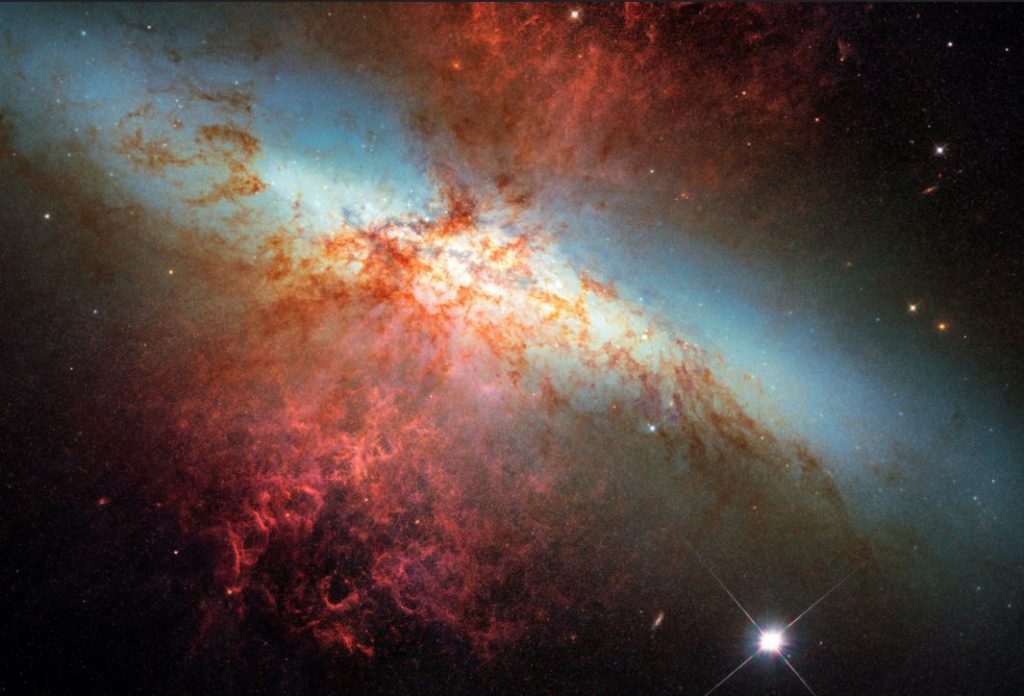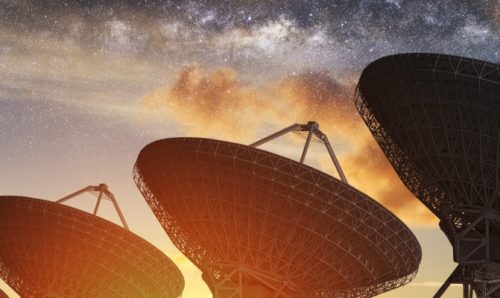Ain’t no sunshine when it’s gone
Departments Research impact and institutes 8th May 2018
The sun is the great star of human existence in more ways than one. All life on Earth depends on it, and the creation of our very planet would have been impossible without it.
You would think, therefore, that when it dies, our iconic star would go out in style. However, until recently, scientists were unsure whether the sun’s demise would come with a mic drop or a whimper. And the reason for this uncertainty is that, while the sun plays a massive role in our lives, in star terms it’s on the small side.
Faded star

Before we get into that, let’s start at the beginning. Stars die in two ways – with literal fireworks or a slow fade to black. Stars with a very large mass expand into red supergiants as they begin running out of fuel in their core to burn (the hydrogen they fuse into helium). Once the hydrogen and helium are gone, the star will continue to limp on by fusing carbon, which pulls the heavier elements it contains towards its core. After a few million years, as the core becomes hotter and denser, it implodes. The exterior shell is cast out into space in what is known as a supernova (and has very little to do with champagne). Here it settles into a planetary nebula – a ring of expanding gas.
Supernovas are incredibly spectacular. In fact, they are the brightest thing in their home galaxy – and can even be seen millions of light years away. The elements – or ‘stardust’ if you’re feeling whimsical – of the star that are blown into space go on to create new stars, planets and solar systems.
Small stars don’t go out with quite such a bang. As their fuel runs out, they expand into red giants, before puffing off their outer layers into space – but in a far less spectacular way that is not visible to neighbouring galaxies. Unlike the black hole left by a supernova, smaller stars fade into white dwarfs that cool and dwindle over trillions of years.
Good day sunshine

Astronomers long ago calculated that the sun has around five billion years left on the clock, at which point it will die. However, they remained uncertain about what would happen when it did; with many believing that our sun’s mass was not great enough to create a nebula that could be seen from a distance.
However, new research from an international team of astronomers, including Professor Albert Zijlstra from the School of Physics and Astronomy here at The University of Manchester, appears to have answered the question at last.
Referring to the mass of gas and dust a star blows into space as its “envelope”, Prof Zijslra explains that it is the light from the core left behind that illuminates this nebula and makes it visible. And thanks to a stellar data-model developed by the team, they have now predicted that the death of the sun will also generate enough light for the nebula it creates to be visible to the next galaxy.
Published in Nature Astronomy, the research also helped to solve a 25-year-old mystery. Back in the 1990s, it was discovered that the brightest planetary nebulae share the same brightness. This was useful because it helped astronomers work out how far away different galaxies were.
However, the discovery was not supported by the data-models, which indicated that any star with a mass of less than twice that of our sun would generate a nebula too faint to see. Using the new model, though, the team have shown that even stars with a low mass can create a bright planetary nebula, because the core of the star heats up so rapidly once its envelope is ejected that it generates ultraviolet light and x-rays that light up the expelled shell.
Of course, by “rapidly” we mean that the core will heat up to the required 30,000 degrees C (the temperature needed to light its envelope before it drifts too far out into space) over the course of five to ten thousand years – because space likes to take its time. The nebula will then glow for 10,000 years – a long time for us, but the blink of an eye in the age of the universe.
Our sun sits almost exactly on the tipping point of the mass needed for a star’s nebula to be visible. If its mass was even a few per cent smaller, its death would be too faint to observe from another galaxy.
“We found that stars with mass less than 1.1 times the mass of the sun produce fainter nebula, and stars more massive than three solar masses [create] brighter nebulae, but for the rest the predicted brightness is very close to what had been observed. Problem solved, after 25 years,” said Prof Zijlstra.
The end of the world as we know it?

Our sun may be a long way off winning the prize for biggest star in the universe; however, in space the best things come in small packages. Because they need to burn so much fuel, huge stars can burn out within just a few million years (not long in the life of the universe). In contrast, smaller stars can burn away for billions of years.
Life on Earth began just short of four billion years ago. This would never have happened without a star like our sun at the centre of the solar system; a huge star simply wouldn’t have hung around for long enough to make life possible – let alone human life.
So, what will happen to Earth when the sun enters its death throes? Well, as the sun expands into a red giant, it will engulf poor Mercury and Venus. Earth will escape this fate, but the planet’s temperature will rise so much the oceans will boil.
But don’t worry – it’s unlikely human life as we know it will remain to see this nightmare play out. Let’s cross our fingers that graphene will have helped us to create the home we need on a new planet before the sea starts to bubble.
Words – Hayley Cox
Images – jespahjoy
astronomydata modelnebulaPhysicsPhysics and AstronomySpacestarsunsupernova




